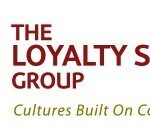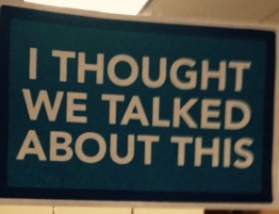
Leadership and Values
March 26, 2015
The Architecture of Managing People
March 28, 2015DEFINING A CORPORATE CULTURE
Creating sustainable, high-performance, working cultures in today’s business environment is a primary focus of all major corporations. With a highly-competitive marketplace, adjusting to the increasing level of global competition, creating environments that are capable of out-performing competition, accepting a rapid pace of change, and creating fresh and new ways of moving forward are cultural traits which are in high demand.
So, how do these high-performance cultures get created? What does it take? I believe that the first step in creating a sustainable high-performance culture is being able to define the culture that exists in terms of behaviors and practices that can be adjusted, changed or added on. I believe there are specific areas of discovery that will define the essential ingredients in the creation of a sustainable high-performance culture. Once a culture is defined, then it can be adjusted.
The 5 key indicators that can be assessed to build a sustainable high-performance culture are:
- Operational Leadership
- Directional Leadership
- Deadlines
- Employee Reward Programs
- Internal Employee Communication
Focused, edited, and directed culture development begins and ends with Leadership. Leadership starts at the very top of the organization and eventually becomes an issue at all levels, including the individual who holds no title but, through personality, holds a position of power and influence in a specific area of the organization. The ability for leaders to make decisions as to what is important versus what is less important is a critical thinking skill. All tasks and projects are not equal, and timing of when to do what is very important. The biggest problem in the development of a high-performance culture is having too many things that are all too important. Great leadership understands there are things that need to be done regularly to manage the operation efficiently and effectively, but these activities only keep you where you are. They don’t move you anywhere. In order to move the organization or team forward, a leader must balance those things that must be done regularly with key initiatives that are directional and strategic in moving the group forward. The ability to edit what is not useful and focus on key activities at the right time in the business year are the critical leadership qualities which create a high-performance culture.
So, how do you know where you are?
OPERATIONAL LEADERSHIP
The management of the current operation is the first task of leadership. The operation is managed through three primary tools:
Key Reports
Great leadership relies on a selected set of key reports that help focus the organization on the critical operational issues of the business.
How to Assess
- Ask several layers of leadership what their top five reports are, which are used at least once a week.
- Ask each individual what information he is looking for, and what decisions are made by looking at these reports.
Outcome
The organization’s operational focus will be determined by the consistency of the answers. In high-performance cultures, all levels of management review a basic set of reports and take consistent action from reading these reports.
Key Management Questions
Much of what happens in a culture is determined by what questions are routinely asked of people in the organization. If a question is asked over and over, the people who are asked only have three options:
- Find the right answer to the questions.
- Leave the organization.
- Answer the question wrong and eventually get fired.
The power is in the questions!
How to Assess
- Ask several layers of leadership to define the top five questions that are asked and to define the answer people are looking for.
- Determine the consistency of what people believe those questions and answers are.
Outcome
Companies that have a high degree of consistency in knowing what the top questions are will have a more focused approach to operating the company.
Operating a company requires a degree of consistency in the managing of the operation. This level of consistency comes from the focused and edited use of reports and key management questions. The more consistent the leadership talks about these elements, the greater the chance that the organization is focused on managing the operation.
Meetings
Understanding where and how meetings are held gives insight as to what kind of leadership is in the organization.
How to Assess
- Are (all, most, some, none) important operational meetings held in the senior management work area?
- Are (all, most, some, none) important operational meetings held in the operations area of the company?
- Are there regularly-scheduled operational meetings?
- Do operational meetings have a (fixed or variable) agenda?
- Are issues and problems discussed openly in operational meetings?
- On a scale of 1-7 (1 low, 7 high) how often do the operational meetings feel like they are dealing with a crisis?
- On a scale of 1-7 (1 low, 7 high) how boring are the meetings?
The answers to these questions will give you insight to what type of interaction takes place around the operation of the business.
Outcome
Strong operational organizations have defined operational meetings with a predictable pattern of interaction and involvement. Issues are openly discussed and dealt with. Crisis discussions are saved for when there is a real crisis.
DIRECTIONAL LEADERSHIP
The second and equally important function of leadership is leading or directing the organization toward the future. In America, you cannot stay where you are. You are either moving ahead or going backward – you never stay the same. Leaders are the people who are keepers of direction.
I am not going to discuss how leaders choose a direction – there are many ways. I would hope that the organization has a strong sense of its identity or brand, and that the leaders use this sense of identity to focus and enhance the organizational direction. I will discuss performance cultures and the practical aspects of the organization’s ability to move forward and change.
The key element to a business culture’s sense of direction is what I call Key Initiatives. A key initiative is an activity that happens in conjunction with managing the operation. These activities usually require more than two major corporate functions to work together to accomplish the project, e.g., marketing and operations. Generally, there is a need to communicate the nature of the key initiative and its activities to the entire organization. The initiatives are clearly different than just managing the business. Many times the expense to execute these initiatives is separated from the normal budgeting process.
How to Assess
After describing the key initiatives concept and its differences to operational management, ask these questions:
- What are the key initiatives that the organization is currently engaged in?
- How many of these initiatives happen yearly?
- Describe when you know you have been successful in instituting a key initiative.
- Do you have (too many, not enough, or just right) amount of key initiatives?
- How do you fund your key initiatives – from our budget or with separate funding?
- What type of meetings do you use to manage these key initiatives?
- Describe how different levels of employees add input into what or how key initiatives are executed.
Again, the consistency of answers to these questions will demonstrate the level of focus and edit senior leadership is capable of providing. High performance cultures have clearly-defined processes to the management of key initiatives.
Outcome
People know their roles and they clearly understand what needs to be done and how it is getting done. They are allowed to enhance the plan and take ownership of the projects required for successful completion of the initiatives. The critical issue to great leadership is the understanding of how much direction the people of an organization can manage. To quote a famous song, “you need to know when to hold them, know when to fold them, know when to walk away…”
Great leadership knows when to focus on improving operations and when to add key initiatives to move the organization forward.
DEADLINES
A great deal of intelligence about what type of culture a company has, will be determined by understanding the nature of deadlines the company and its employees face. Not only will you be able to understand the culture, I believe you will be able to predict the personality of the individuals who will be attracted to and promoted in the culture. I believe you will also be able to predict the nature of the cultural shortfalls that will keep the organization from sustaining a high-performance culture. Deadlines are those moments in time that something must be produced and there’s a ramification to be dealt with.
In my consulting work around Companies’ brand identities, I have become aware of the power of deadlines. When a company has a significant level of deadlines, the nature of the culture becomes very task-oriented. Decisions need to be made and process falls victim to the deadlines. These types of cultures regularly have individuals feeling disassociated from the organization. The employees often complain about not being asked before being told what to do.
The people promoted most often are those who are ready to take charge and get things done. These take-charge people are rewarded for getting things done and taking no prisoners.
In the cultures that do not have a high level of deadlines, the opposite happens. Things tend to be processed, sometimes to death. There is a need to get lots of people included and people making quick decisions are often considered pushy, not team players.
Neither of these two extremes creates the best high-performance culture. Both types of skills – decisive decisions and adequate process – are required to create a sustainable high-performance environment. The question is how do you discover what the organization currently acts like?
How to Assess
Again, asking leaders about the quantity and intensity of the deadlines their company faces will offer great insight into the nature of the existing culture.
- Describe the type of deadlines the company faces.
- Describe the type of deadlines your division or team faces.
- When a deadline is not met, what happens?
- Does senior management allow enough time for employee input into how a decision is made?
- Does the organization seem like it has a lot of crisis just prior to a deadline?
Outcome
Companies that have lots of deadlines can also have enough process to engage the employees in a meaningful discussion of what is the best course of action. It is in these environments where ownership of the outcomes will be spread to a variety of levels of the organization. If there is too much process with no decisions, or too many decisions with no process, the culture will develop a sense of frustration and ownership will be held only by a few senior managers. A committed work force will be hard to develop.
EMPLOYEE REWARD PROGRAMS
In all business cultures, people get rewarded. These rewards are in the form of titles, more interesting work projects, invitations to key social functions, relationships with senior managers, recognition through formal rewards and, of course, more salary.
When an individual gets rewarded, everyone in the organization is put on notice that it is the way to act. Also, once an individual is rewarded, the entire organization judges as to the fairness of the reward system. This judgment of fairness goes much deeper than just formal rewards. The entire review process also plays directly into the employee’s judgment as to fairness in the organization.
In many companies, reward programs are part of a competitive climate that senior management feels is healthy. The employee with the most sales wins, or the one with the best quarterly production numbers. Most of these rewards are tied to short-term results and in each case, as the culture develops, other employees form opinions about what is really important here and how fair the company is.
Rewards go a long way in creating an organizational culture. Be careful who you reward – they are the winners and everyone else is the loser.
How to Assess
Again, through a series of one-on-one interviews with different level of the organization, you can determine a great deal about what is highly rewarded in the organizational culture.
- Does the company have a formal reward program? Describe it.
- Does everyone in the company have an equal opportunity to be rewarded?
- Do the same people always seem to be rewarded?
- Does the company have any rewards for teams of people?
- How are rewards given out?
- Do you care if you receive a reward?
- Outside of the formal reward program, describe other ways you have seen people rewarded.
Outcome
An organization’s reward program will help determine what type of culture the organization has. The key to rewards are: Do they build a sense of common focus or create individual competitions between co-workers? Do the reward programs help build a sense of fairness or do favorite people seem to always win? A sustainable high-performance culture will have people wanting to be rewarded for outstanding performance.
INTERNAL EMPLOYEE COMMUNICATION
Internal communications are the fuel for a high-performance culture. People who are informed feel they are trusted and respected. Kept in the dark, employees gossip and create their own truths. “Who knew what when” becomes a source of power in the organization. Creating a sense of community that shares information across all levels of the company helps create openness required for solving problems and issues at the lowest level possible. When employees are treated only with a need-to-know attitude, there is a sense that they are not important in the process. Lack of ownership occurs in these types of cultures.
How to Assess
In a series of one-on-one interviews, a great deal of intelligence about an organization’s communication patterns can be gained.
- How do you find out about important decisions that have been made?
- Is there a lot of discussion in the back hall about what people think is happening?
- Does the company regularly send newsletters or emails out to all employees?
- Do these corporate communications talk about tough issues that the company is facing?
- Do you value the information that is provided in these formal communication pieces?
- Who do you trust to give you the best information about what or how the company is doing?
- Does your boss answer your questions about what is happening in the company?
- Are employees asked for input that has an impact on how the company operates?
Outcome
Organizational cultures that have clear and open communication with their employees will build a greater sense of common purpose than those that don’t. High-performance cultures live on open communication.
CONCLUSION
There are five key indicators that can be assessed to determine the fundamental building blocks of a sustainable high-performance culture.
- Operational Leadership
- Directional Leadership
- Deadlines
- Reward Programs
- Internal Communication
All play important roles in the company’s organizational culture. Taking an assessment of these cultural building blocks on a regular basis will give you a better understanding of what dynamics are creating the way your employees are engaged in making a difference.
Employees who understand what is important, who are challenged to improve how things are done, who are engaged in enough process yet take deadlines seriously, and who feel informed and trusted in knowing what is going on, will take ownership in helping create outcomes that sustain high performance.






7 Comments
That is a really good tip especially to those fresh to the blogosphere.
Simple but very accurate info… Many thanks for sharing this one.
A must read article!
Awesome! Its really awesome piece of writing,
I have got much clear idea on the topic of from this article.
thanks for the comment I loaded some images that are the wrong size — we hope to have this cleaned up this week My official launch is in 10 days or so thanks again jkb
thanks jkb
thanks for your question this is a word press platform and concepts need to be told with a story — it is all about the story jkb